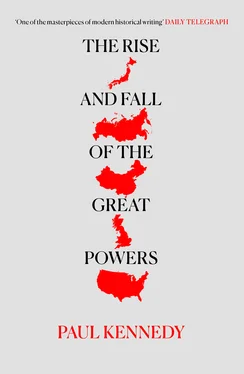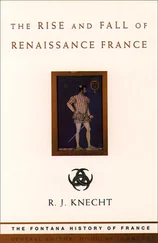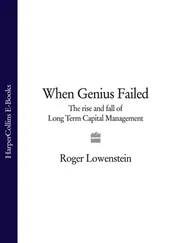Why was it that those five powers in particular – while obviously not possessing exactly the same strengths – were able to remain in (or to enter) the ‘major league’ of states? Purely military explanations are not going to get us very far. It is hard to believe, for example, that the rise and fall of Great Powers in this period was caused chiefly by changes in military and naval technology, such as might benefit one country more than another. *There were, of course, many small-scale improvements in weaponry: the flintlock rifle (with ring bayonet) eliminated the pikeman from the battlefield; artillery became much more mobile, especially after the newer types designed by Gribeauval in France during the 1760s; and the stubby, shorter-ranged naval gun known as the carronade (first built by the Carron Company, of Scotland, in the late 1770s) enhanced the destructive power of warships. There were also improvements in tactical thought and, in the background, steady increases in population and in agricultural output which would permit the organization of far larger military units (the division; the corps) and their easier sustenance upon rich farmlands by the end of the eighteenth century. Nonetheless, it is fair to say that Wellington’s army in 1815 was not significantly different from Marlborough’s in 1710, nor Nelson’s fleet much more advanced technologically than that which had faced Louis XIV’s warships. 2
Indeed, the most significant changes occurring in the military and naval fields during the eighteenth century were probably in organization , because of the enhanced activity of the state. The exemplar of this shift was undoubtedly the France of Louis XIV (1661–1715), where ministers such as Colbert, Le Tellier, and others were intent upon increasing the king’s powers at home as well as his glories abroad. The creation of a French war ministry, with intendants checking upon the financing, supply, and organization of troops while Martinet as inspector general imposed new standards of training and discipline; the erection of barracks, hospitals, parade grounds, and depots of every sort on land, to sustain the Sun King’s enormous army, together with the creation of a centrally organized, enormous fleet at sea – all this forced the other powers to follow suit, if they did not wish to be eclipsed. The monopolization and bureaucratization of military power by the state is clearly a central part of the story of ‘nation-building’; and the process was a reciprocal one, since the enhanced authority and resources of the state in turn gave to their armed forces a degree of permanence which had often not existed a century earlier. Not only were there ‘professional’, ‘standing’ armies and ‘royal’ navies, but there was also a much more developed infrastructure of war academies, barracks, ship-repair yards, and the like, with administrators to run them.
Power was now national power, whether expressed through the enlightened despotisms of eastern Europe, the parliamentary controls of Britain, or the later demagogic forces of revolutionary France. 3 On the other hand, such organizational improvements could be swiftly copied by other states (the most dramatic example being Peter the Great’s transformation of Russia’s army in the space of a couple of decades after 1698), and by themselves provided no guarantee of maintaining a country’s Great Power position.
Much more important than any of these strictly military developments in explaining the relative position occupied by the Great Powers in the years 1660–1815 were two other factors, finance and geography . Taken together – for the two elements frequently interacted – it is possible to gain some larger sense of what at first sight appears as a bewildering pattern of successes and failures produced by the many wars of this period.
The ‘Financial Revolution’
The importance of finance and of a productive economic base which created revenues for the state was already clear to Renaissance princes, as the previous chapter has illustrated. The rise of the ancien régime monarchies of the eighteenth century, with their large military establishments and fleets of warships, simply increased the government’s need to nurture the economy and to create financial institutions which could raise and manage the monies concerned. 4 Moreover, like the First World War, conflicts such as the seven major Anglo-French wars fought between 1689 and 1815 were struggles of endurance. Victory therefore went to the power – or better, since both Britain and France usually had allies, to the Great Power coalition – with the greater capacity to maintain credit and to keep on raising supplies. The mere fact that these were coalition wars increased their duration, since a belligerent whose resources were fading would look to a more powerful ally for loans and reinforcements in order to keep itself in the fight. Given such expensive and exhausting conflicts, what each side desperately required was – to use the old aphorism – ‘money, money, and yet more money’. It was this need which formed the background to what has been termed the ‘financial revolution’ of the late seventeenth and early eighteenth centuries, 5 when certain western European states evolved a relatively sophisticated system of banking and credit in order to pay for their wars.
There was, it is true, a second and nonmilitary reason for the financial changes of this time. That was the chronic shortage of specie, particularly in the years before the gold discoveries in Portuguese Brazil in 1693. The more European commerce with the Orient developed in the seventeenth and eighteenth centuries, the greater the outflow of silver to cover the trade imbalances, causing merchants and dealers everywhere to complain of the scarcity of coin. In addition, the steady increases in European commerce, especially in essential products such as cloth and naval stores, together with the tendency for the seasonal fairs of medieval Europe to be replaced by permanent centres of exchange, led to a growing regularity and predictability of financial settlements and thus to the greater use of bills of exchange and notes of credit. In Amsterdam especially, but also in London, Lyons, Frankfurt, and other cities, there arose a whole cluster of moneylenders, commodity dealers, goldsmiths (who often dealt in loans), bill merchants, and jobbers in the shares of the growing number of joint-stock companies. Adopting banking practices which were already in evidence in Renaissance Italy, these individuals and financial houses steadily created a structure of national and international credit to underpin the early-modern world economy.
Nevertheless, by far the largest and most sustained boost to the ‘financial revolution’ in Europe was given by war. If the difference between the financial burdens of the age of Philip II and that of Napoleon was one of degree, it still was remarkable enough. The cost of a sixteenth-century war could be measured in millions of pounds; by the late seventeenth century, it had risen to tens of millions of pounds; and at the close of the Napoleonic War the outgoings of the major combatants occasionally reached a hundred million pounds a year . Whether these prolonged and frequent clashes between the Great Powers, when translated into economic terms, were more of a benefit to than a brake upon the commercial and industrial rise of the West can never be satisfactorily resolved. The answer depends, to a great extent, upon whether one is trying to assess the absolute growth of a country as opposed to its relative prosperity and strength before and after a lengthy conflict. 6 What is clear is that even the most thriving and ‘modern’ of the eighteenth-century states could not immediately pay for the wars of this period out of their ordinary revenue. Moreover, vast rises in taxes, even if the machinery existed to collect them, could well provoke domestic unrest, which all regimes feared – especially when facing foreign challengers at the same time.
Читать дальше












